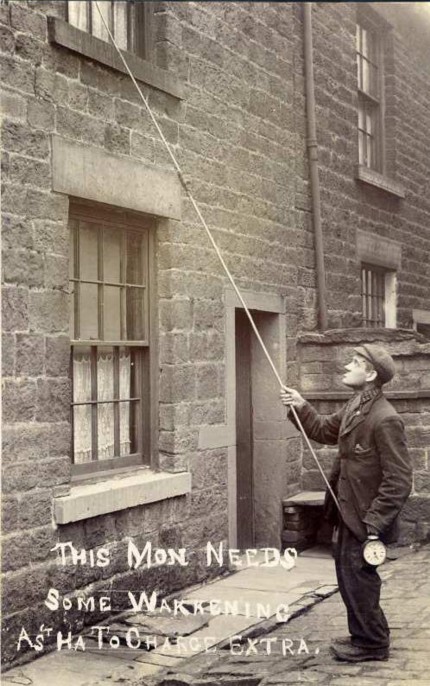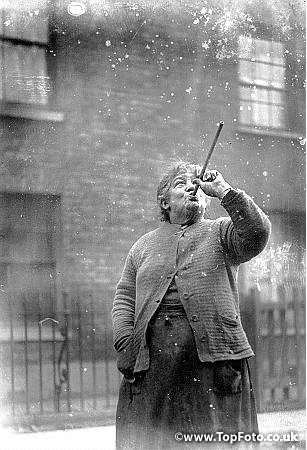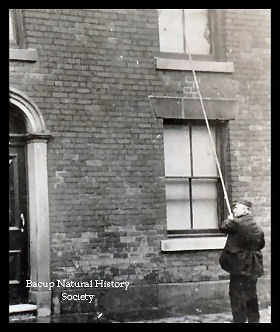Worst Career: the Knocker Up February 9, 2016
Author: Beach Combing | in : Contemporary, Modern , trackback
He knocks at doors wheer new-born babs
Hev kaled him throo t’ black heawrs o’ dark;
He knocks wheer deoth stalks in an’ grabs,
Or age hes thrown fooak eawt o’ wark.
He knows heaw mony raps ‘ll rouse
Young lusty Dick, or sleepy Nan.
He knocks ’em eawt o’ t’ second snooze,
‘Rat-tat, rat-tat, ran-tan.’
This is a return to an old tag, the WCIH or the worst career in history: today the knocker up, one of the most hated men in nineteenth-century England. In the old agricultural communities people woke up with the sun. In the industralising communities of the nineteenth century, the seasons ceased to matter: the loom/engine/machine began at six o’clock on the dot. Factories had strict rules about punctuality. If you were late you were fined. (A common trick was to open the factory at 6.00 and then close the doors at 6.01 until 6.30 when all those outside would be let in only after having pay docked.) In this changed situation it became a matter of life and death to make sure that you woke up on time. Yet many families could not afford clocks and even those that could sometimes worried about their ability to get up after the chimes: the insistent alarm clock of today lay far in the future. Enter from left stage the knocker up. The knocker up was a man (and sometimes a woman) who had to drag you from slumbers: ‘they give them unquiet dreams’. They would walk down the street and stop at the houses that paid them a pittance a week: they would knock until a face appeared at the window. It was one thing to wake up those inside, it was another to actually get them out of bed.
How did the knocker up wake up his charges? Here is a description from Newcastle published in 1922 (Mothersole, Hadrian’s Wall), a reminder that the occupation continued well beyond the First World War.
Turning to the left along Shields Road, I was amused to see an old woman, in dirty apron and grey shawl, going round knocking at much becurtained windows on the ground floor with a small hammer: ‘Lizzie, it’s well-nigh six o’clock’ ; ‘Mary, it’s time ye riz’ ; and so on, at house after house. It was my first sight of a ‘knocker-up.’
But in the two storey houses of the industrial English towns many clients had their windows out of reach of the hammer. Here then a pole with a wire claw would be used. This is from the great Gracie Fields’ autobiography.
We used to get up at five A.M. for the mills when Old Amy, the knocker-up woman, came and rapped on our bedroom windows with her pole. Each family paid Old Amy tuppence a week to be awakened, and it was no use shouting ‘Righto! Amy,’ when you heard her tap-tap in the darkness, she just kept rapping till she saw your face at the window; then she knew you were out of bed and went on to her next customer. As Amy trudged down the street the candles and oil-lamps lit behind her in each little window, and in each house the kettle would go on for the tea. Outside you could hear the clogs of the early mill workers, the men who had to get there first to tend the furnace fires.
There is also the claim made that pea-shooters were sometimes used: Beach is skeptical.

The knocker up then headed off to his rest as his charges began their all too short stroll through the street, chomping on bread and treacle. Tomorrow he would have to be up at 4.00: and, reader, who guards the guard? Who wakes the waker?

Other knocker uppers? drbeachcombing AT yahoo DOT com


